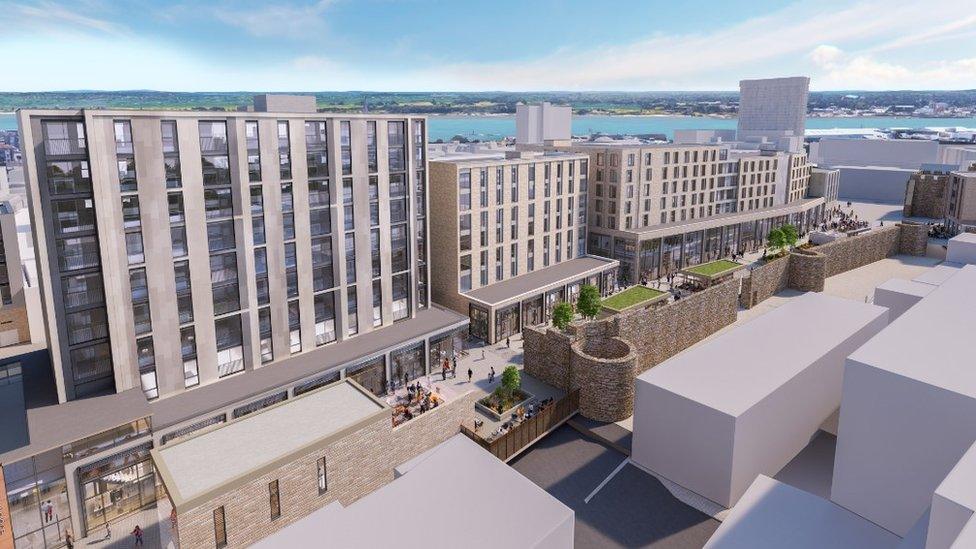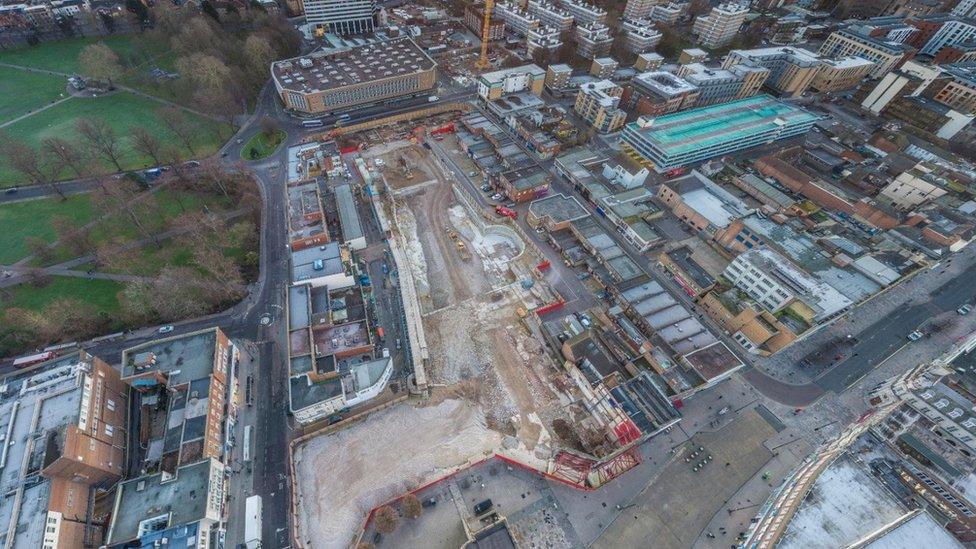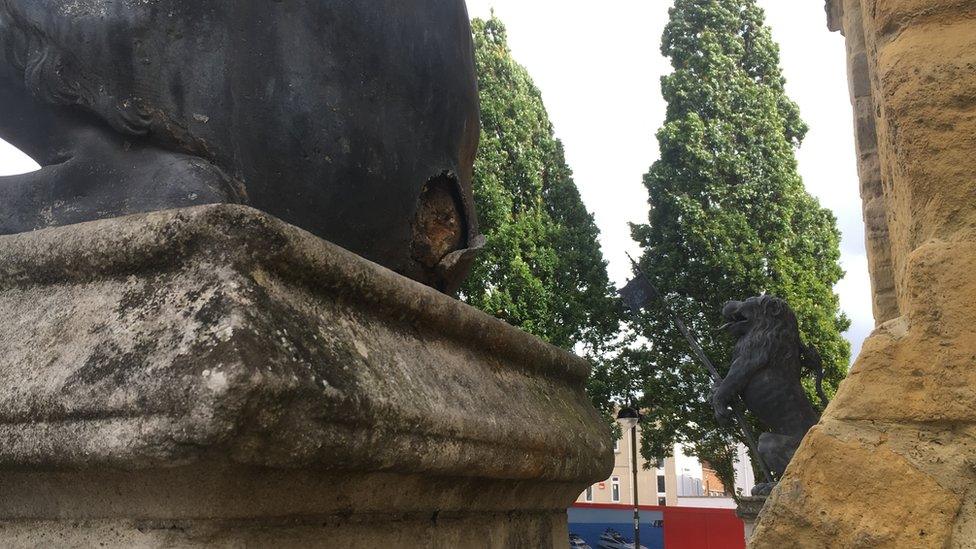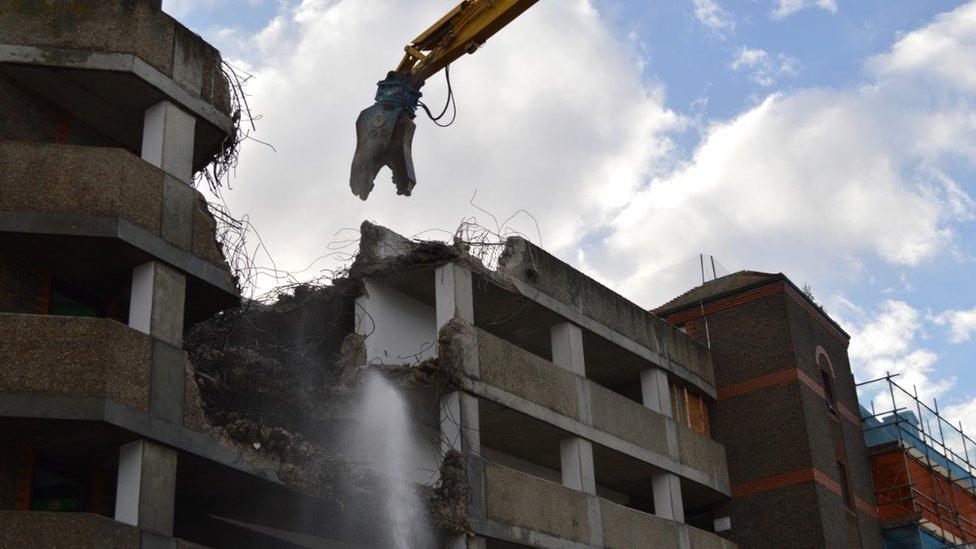Hotel plan for Southampton medieval walls redevelopment
- Published

The plans have been changed to include a 240-bedroom hotel
A multi-million pound scheme to redevelop an area in central Southampton has been changed to add a hotel instead of student accommodation.
Developer Tellon Capital said the revised £100m plans reflected a change in the city's dynamic and included a 240-bedroom hotel as well as 287 flats.
The new buildings, within the city's medieval town walls, would range in height from four to 12 storeys.
If the changes are approved, building work is expected to start in 2020.

The 1980s Bargate shopping centre and multi-storey car park are among the buildings demolished to make way for the redevelopment
James Burchell from Tellon Capital said the changes had been made to "create a development which will enhance the city centre taking into account changes in Southampton's dynamics".
Mr Burchell said terms had already been agreed with a hotel firm.
Previous plans featured 185 units of student accommodation.
The proposed scheme also includes shops and involves an open boulevard, to make a feature of the medieval walls.
Buildings alongside Queensway and East Street have already been demolished ahead of the redevelopment.
A plate featuring a bare-chested woman and a cannon ball were among items found during a dig by archaeologists in February.

Southampton's town walls
The oldest sections, Bargate and Eastgate, date from 1180 - alterations were made in about 1290
They were extended following the devastating French raid of 1338. Edward III ordered that walls be built to "close the town", with the western walls completed in 1380
The walls - including eight gates and 29 towers - stretched for one and a quarter miles, with the Bargate as the entrance to the medieval town
In the late 19th Century an idea to demolish the Bargate as an impediment to traffic was defeated following a public campaign. But in the 1930s the adjoining walls were removed to allow traffic to flow on either side
Roughly half of the walls, 13 of the original towers and six gates are standing, making them some of the most complete medieval town walls in the country
Source: Southampton City Council
- Published26 February 2019

- Published19 September 2018

- Published24 November 2017
